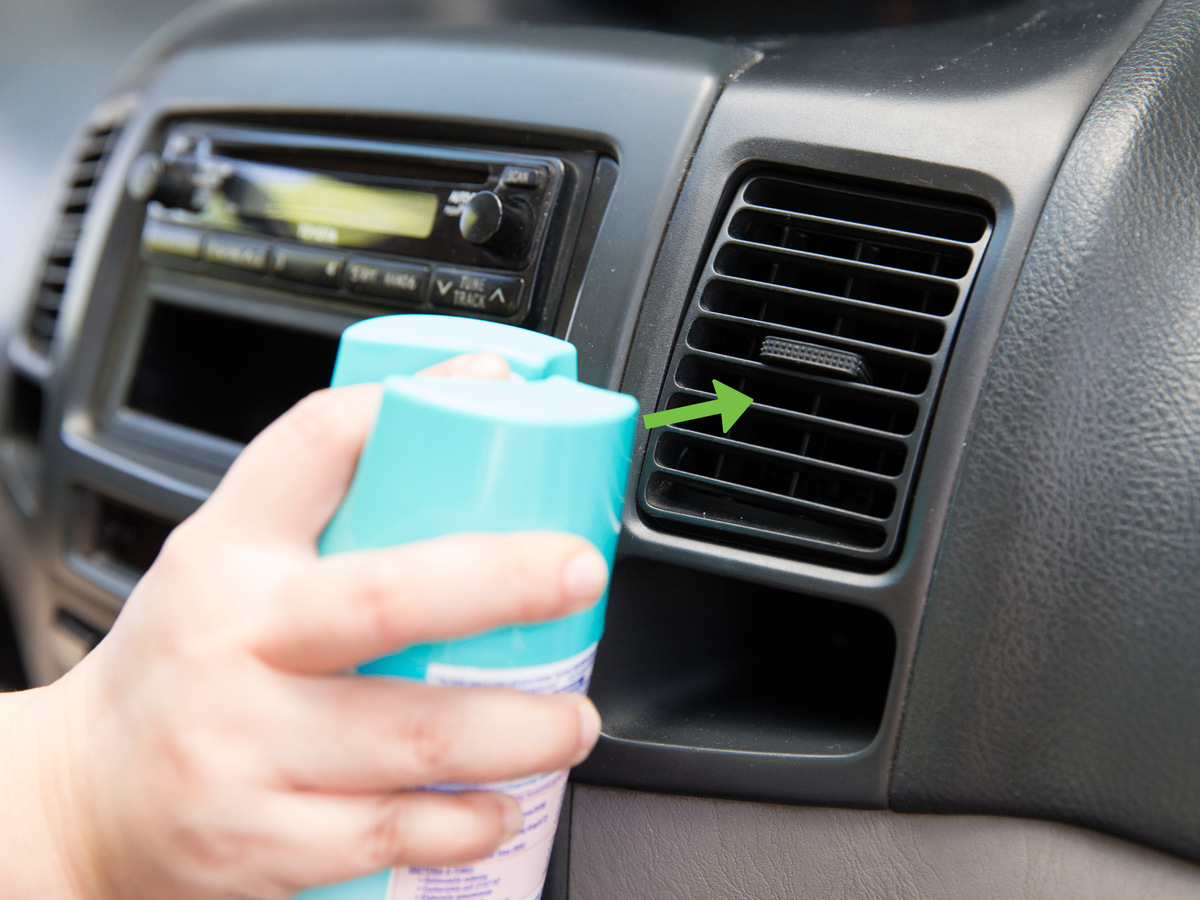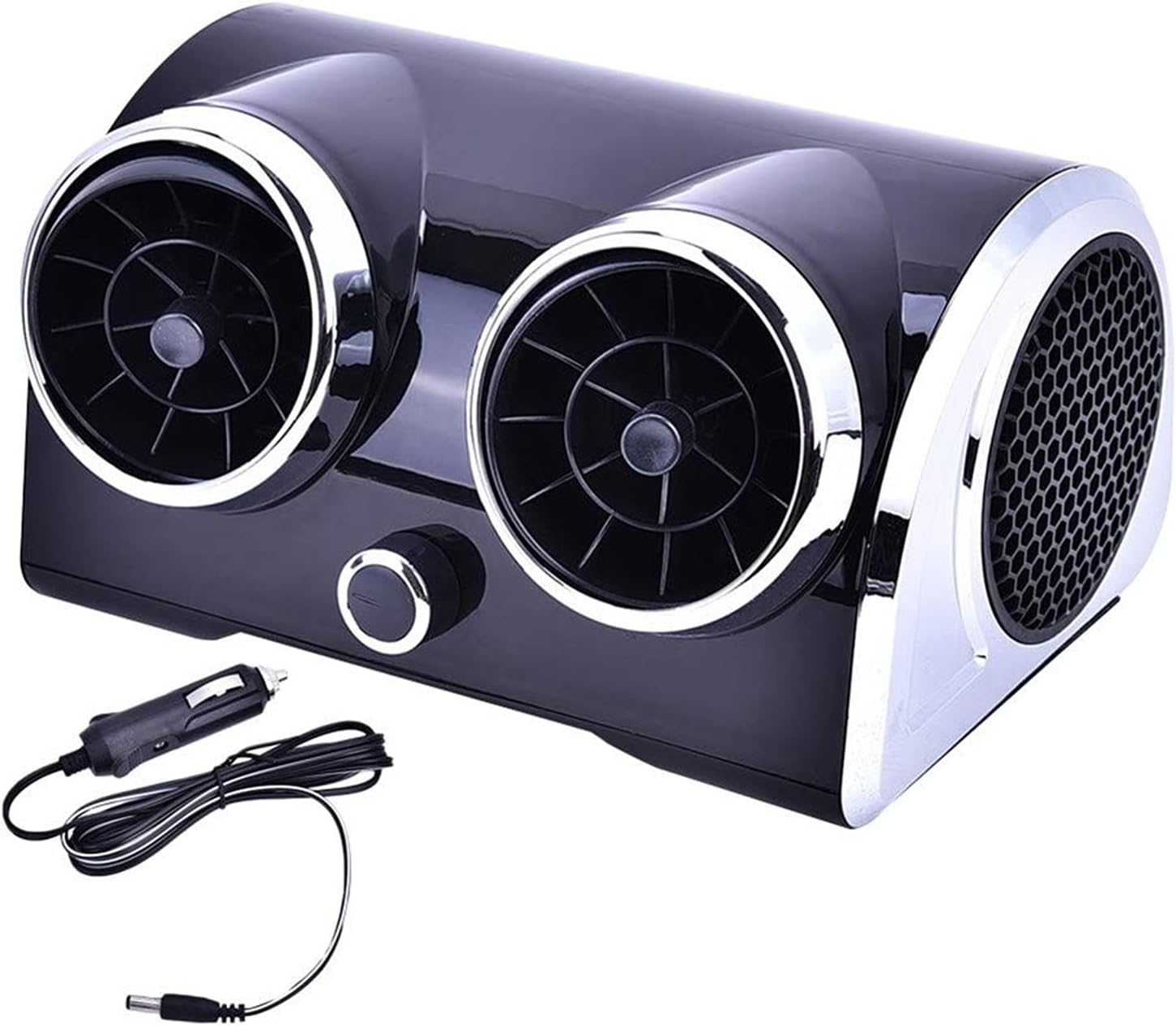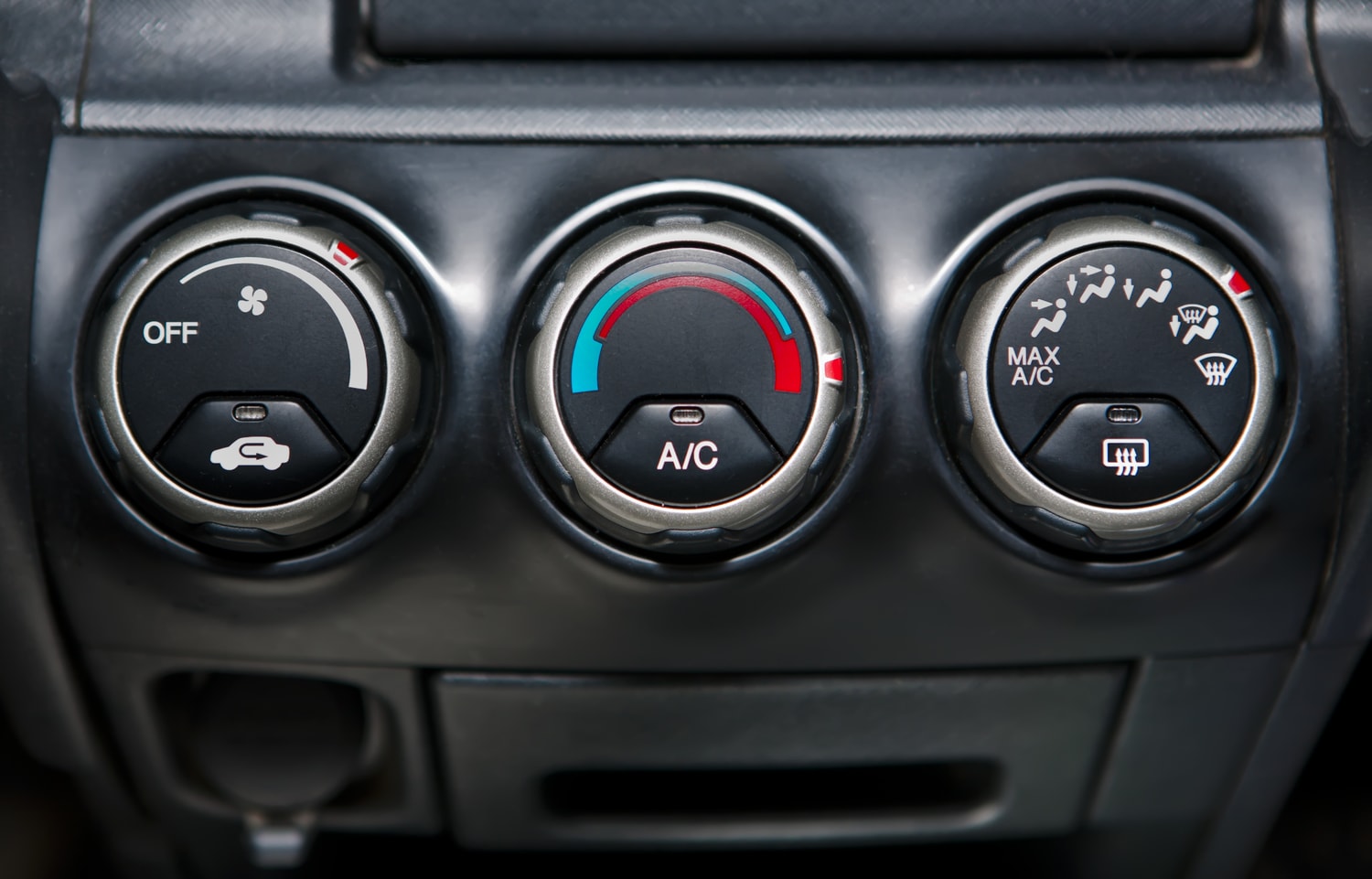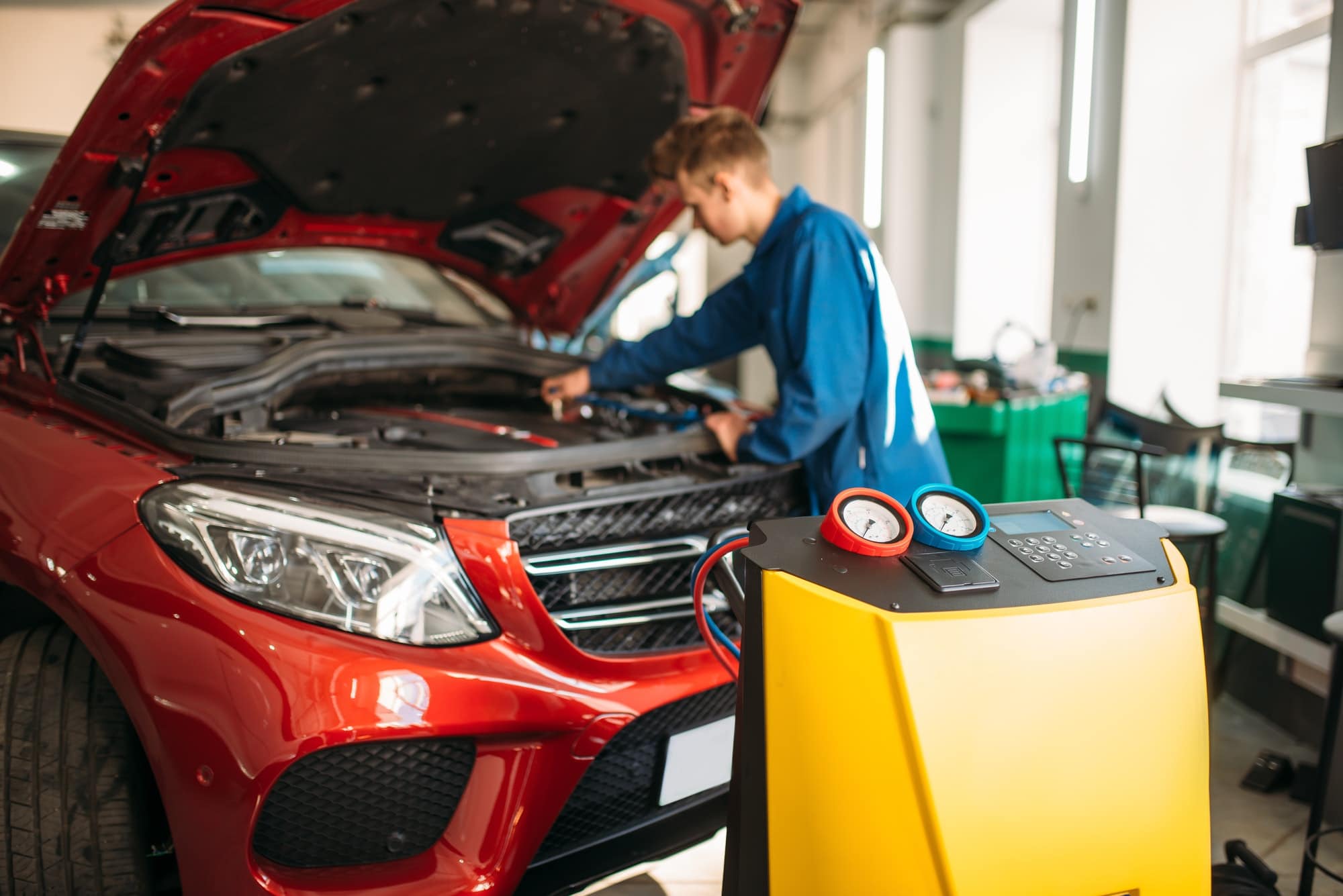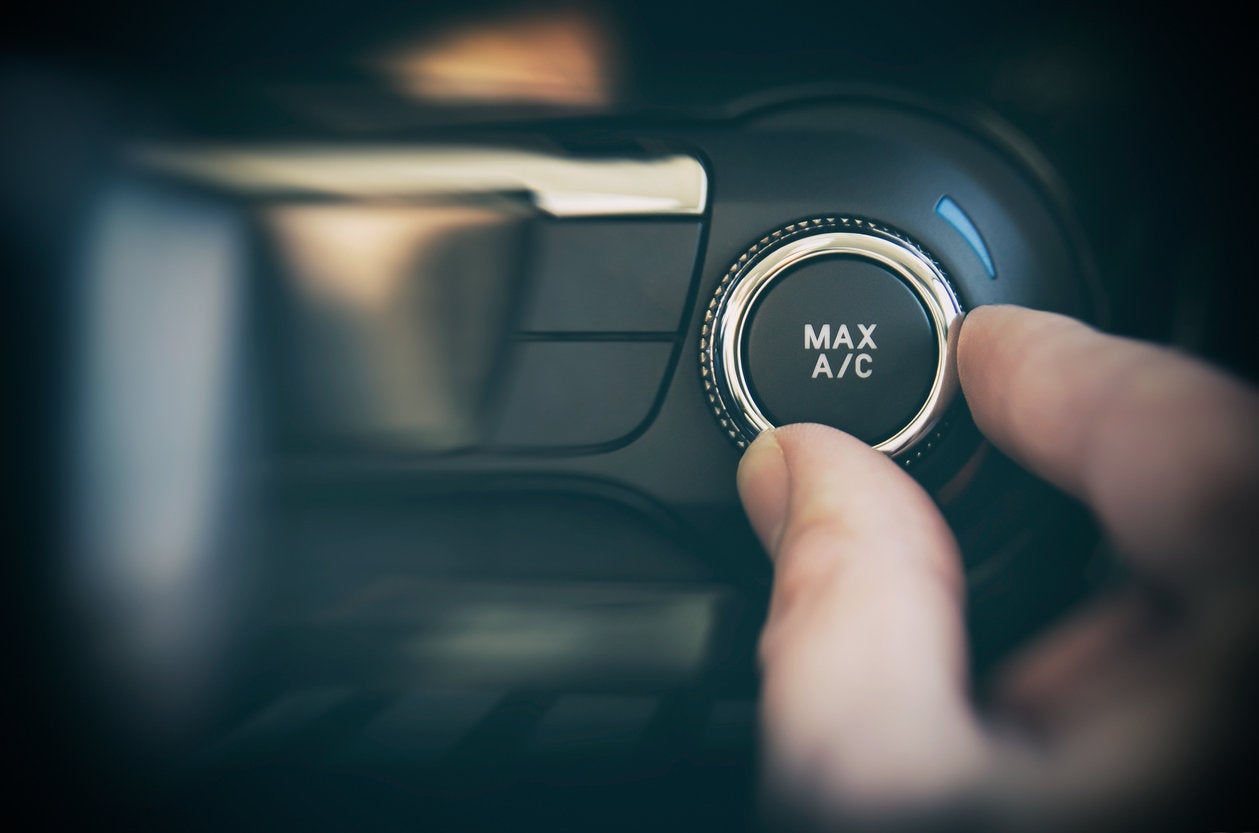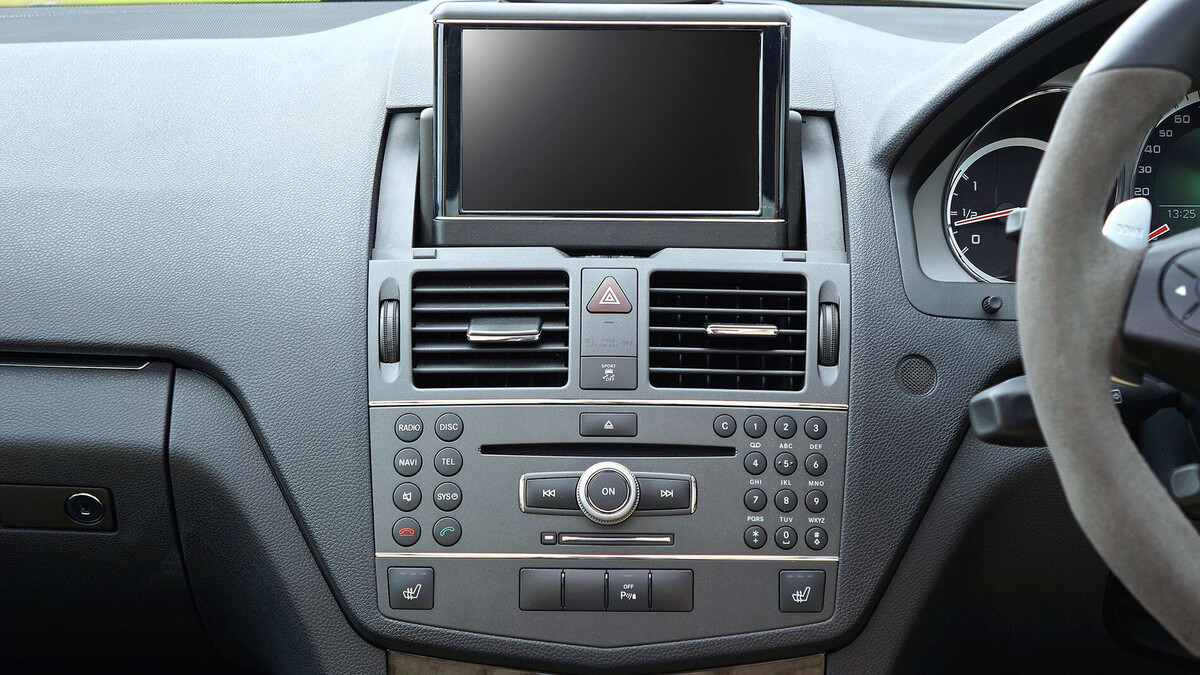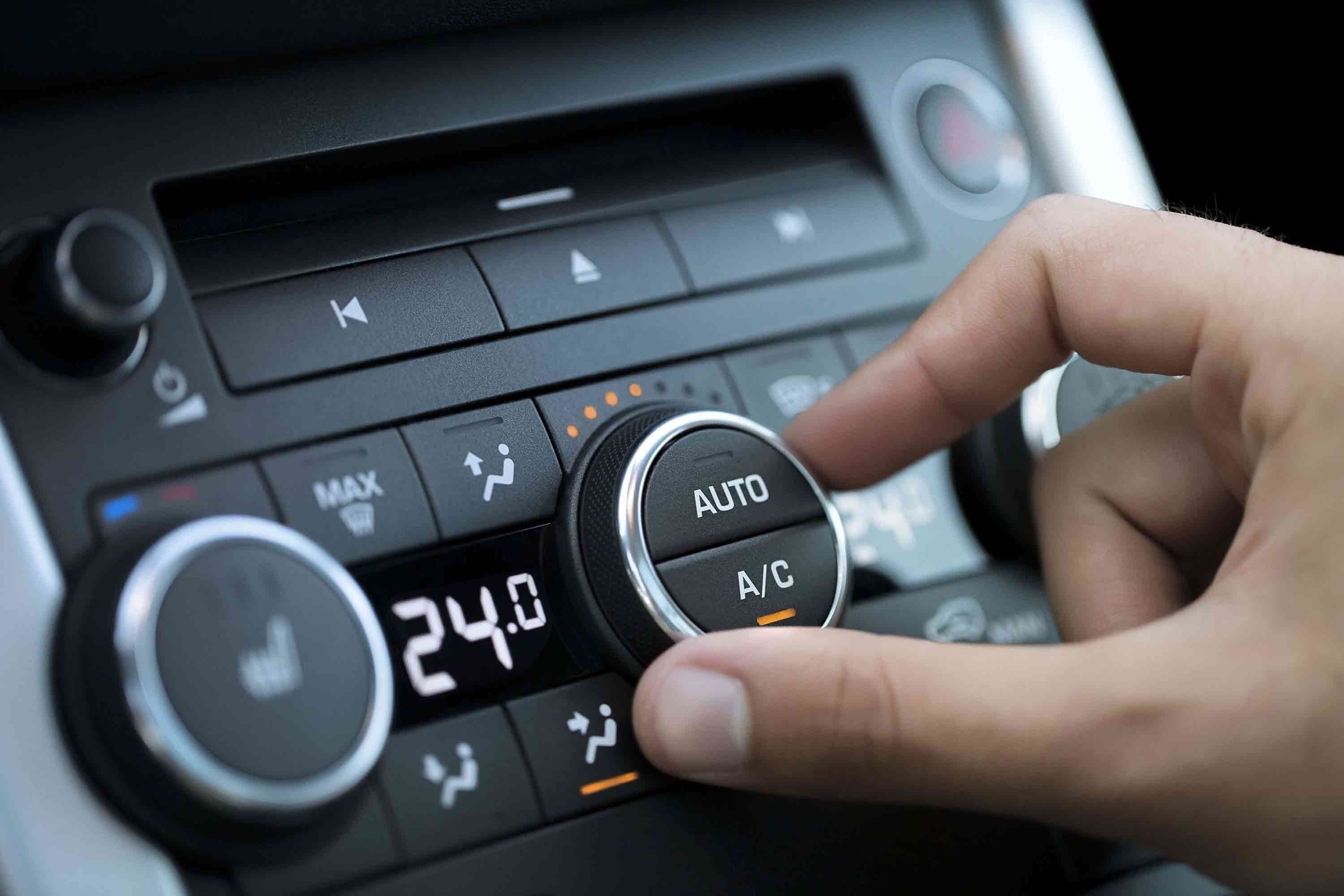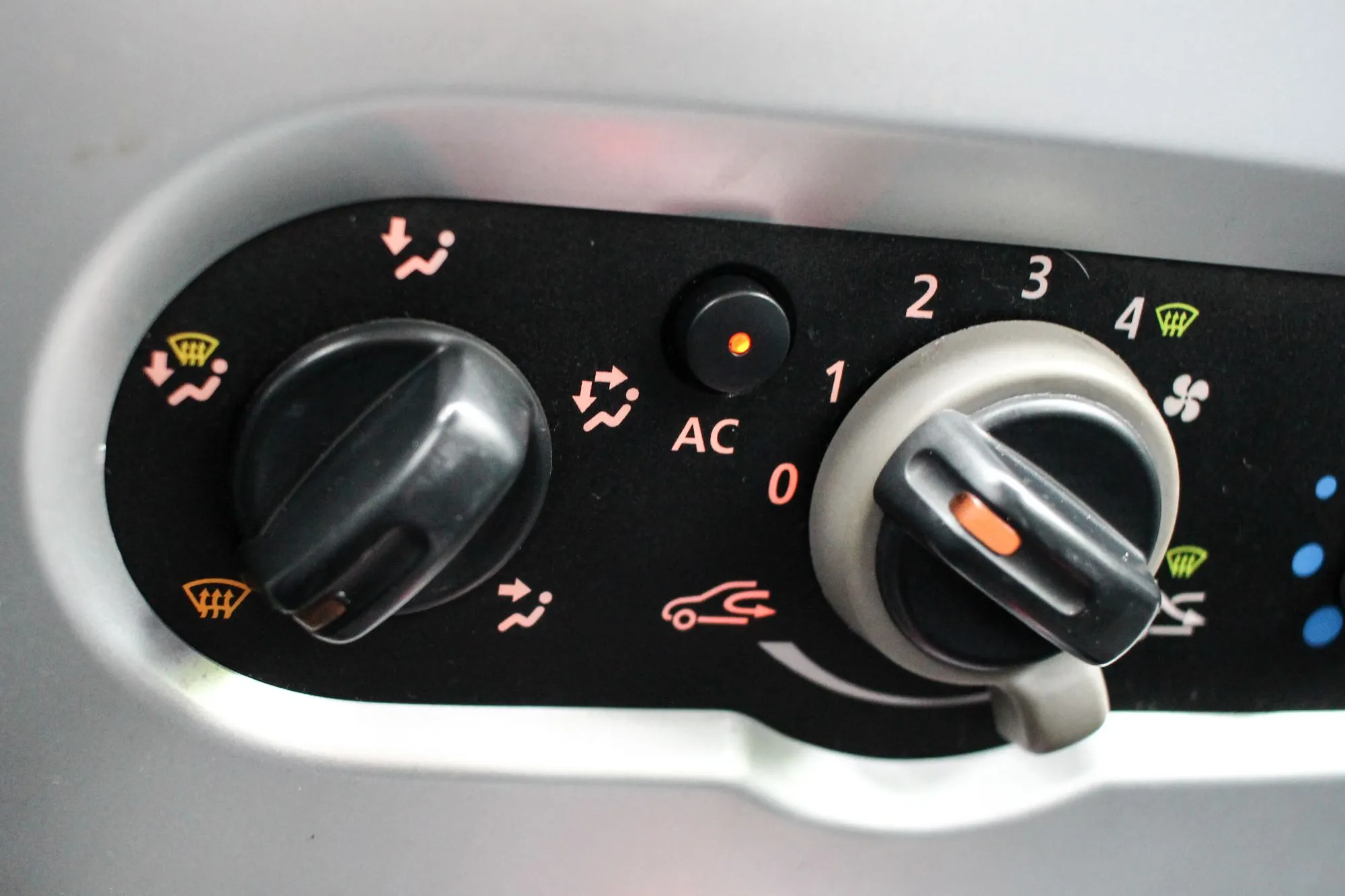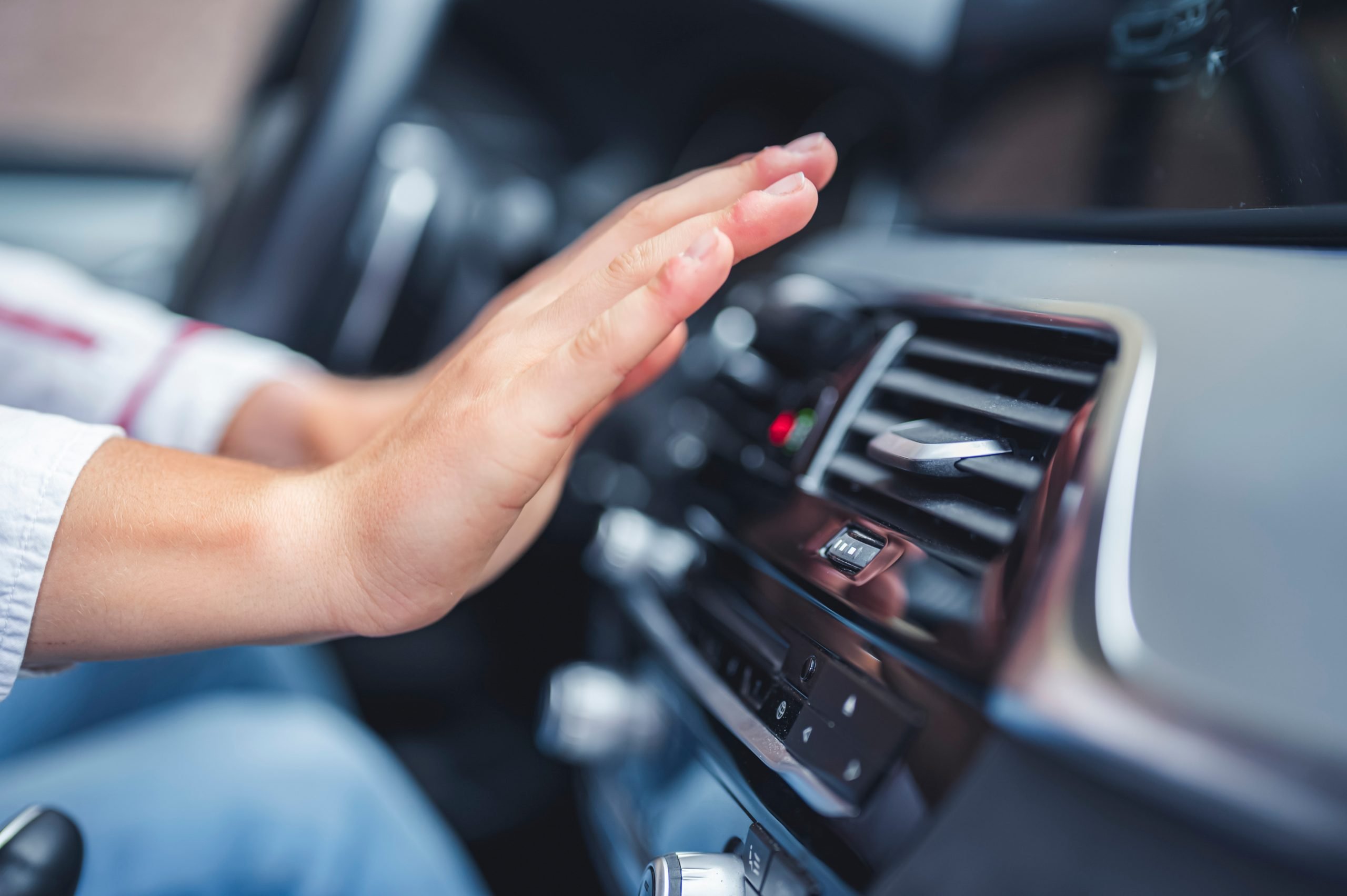Home>Home Maintenance>How To Keep A Car Cool Without Air Conditioning


Home Maintenance
How To Keep A Car Cool Without Air Conditioning
Modified: March 6, 2024
Discover ways to keep your car cool during hot summer days without relying on air conditioning. Learn effective home maintenance tips for a comfortable and enjoyable driving experience.
(Many of the links in this article redirect to a specific reviewed product. Your purchase of these products through affiliate links helps to generate commission for Storables.com, at no extra cost. Learn more)
Introduction
When the summer heat is at its peak, stepping into a hot car can be unbearable. While air conditioning offers instant relief, there may be situations where you find yourself without this luxury. Whether your AC is malfunctioning or you simply prefer to conserve fuel, knowing how to keep a car cool without air conditioning can make a significant difference in your comfort level during those scorching summer days.
Keeping your car cool not only makes for a more pleasant driving experience but also helps to prevent damage to various components. Excessive heat can lead to interior damage, including cracked dashboards, faded upholstery, and malfunctioning electronics. It can also take a toll on your car’s performance, as overheating can affect the engine and other vital parts.
Fortunately, there are several simple and effective tips and tricks you can employ to beat the heat and keep your car cool without relying on air conditioning. These strategies range from parking techniques to using sun protection tools and utilizing natural air flow. Let’s explore these methods in more detail.
Key Takeaways:
- Beat the heat without air conditioning by parking in shaded areas, using sunshades, and cracking windows open. These simple strategies can keep your car cool and comfortable during hot summer days.
- Protect your car from heat damage and maintain a pleasant driving experience by avoiding heat-generating activities, strategically choosing parking spots, and using portable car coolers or fans. These tips help combat the heat without relying solely on air conditioning.
Read more: How To Keep Car Cool Without AC
Importance of Keeping a Car Cool
Understanding the importance of keeping your car cool can motivate you to take the necessary steps to protect it from excessive heat. Here are a few reasons why it’s essential to keep your car cool:
- Comfort: A hot car can be extremely uncomfortable to drive in, especially during long journeys. By keeping your car cool, you can enjoy a more pleasant and relaxing driving experience.
- Health and Safety: High temperatures in a closed car can pose a health risk, particularly to children, elderly individuals, and pets. Heatstroke and dehydration are serious concerns in hot environments. By keeping your car cool, you can reduce the risk of heat-related illnesses and ensure the well-being of your passengers.
- Preservation of Interior: Excessive heat can cause significant damage to your car’s interior, including fading of upholstery and cracks on the dashboard. By keeping your car cool, you can extend the lifespan of these components and maintain the aesthetic appeal of your vehicle.
- Maintenance of Performance: Heat can adversely affect your car’s performance and reduce fuel efficiency. Overheating can lead to mechanical issues, such as radiator damage and engine malfunctions. By keeping your car cool, you can protect the vital components and ensure optimal performance.
- Preservation of Electronics: Electronics and devices in your car, such as smartphones, GPS systems, and audio equipment, can be sensitive to high temperatures. Exposing them to excessive heat for prolonged periods can cause them to malfunction or shorten their lifespan.
Considering these factors, it becomes clear that keeping your car cool is not just about personal comfort but also about ensuring the longevity and proper functioning of your vehicle. Let’s explore some effective strategies for keeping your car cool without relying on air conditioning.
Tips for Keeping a Car Cool Without Air Conditioning
Even without air conditioning, there are several strategies you can employ to keep your car cool during hot summer days. Here are some effective tips:
- Park in shaded areas: Whenever possible, park your car in a shaded area to minimize its exposure to direct sunlight. Look for parking lots with covered structures, trees, or buildings that can provide shade and help keep the interior temperature down.
- Use a windshield sunshade: Place a reflective windshield sunshade on your front windshield to block out the sun’s rays and prevent the interior from heating up. This simple and inexpensive accessory can make a significant difference in reducing the temperature inside your car.
- Crack the windows open: Before leaving your parked car, crack the windows open slightly to allow hot air to escape and promote air circulation. Be mindful of safety and ensure that the window openings are not large enough to allow unauthorized access.
- Use seat covers or towels: To keep your seats cool, cover them with light-colored seat covers or towels. Dark-colored seats tend to absorb more heat, so using covers or towels can help reflect sunlight and keep the seating surfaces cooler.
- Utilize air vents and fans: Take advantage of your car’s air vents by directing them towards you or utilizing the floor vents to draw in cooler air. Additionally, using portable fans or clip-on battery-operated fans can help increase airflow inside the vehicle.
- Avoid heat-generating activities: To prevent unnecessary heat buildup, avoid activities that generate heat, such as using electronic devices or leaving the car’s engine running for extended periods while the car is parked.
- Choose parking strategically: When parking, consider factors such as the position of the sun and the airflow in the area. Opt for parking spots that have a shade or are positioned in a way that allows for natural air flow to cool your car.
- Use reflective window shades: In addition to the windshield sunshade, consider using reflective shades on the side and rear windows. These shades can help minimize direct sunlight and reduce the temperature inside your car.
- Cover the steering wheel and seats: Use a steering wheel cover and seat covers to prevent them from becoming too hot to touch. Light-colored covers can help reflect heat and keep these surfaces cooler.
- Consider tinting the windows: Tinting the windows can help reduce the amount of heat that enters your car. However, be sure to comply with local regulations regarding window tinting to avoid any legal issues.
- Use a portable car cooler or fan: Technology has provided us with portable car coolers or fans that can be plugged into the car’s power outlet. These devices can help circulate the air inside your car and provide relief from the heat.
By implementing these tips, you can effectively keep your car cool even without air conditioning. Choose the strategies that work best for you and your driving habits to ensure a comfortable and enjoyable experience behind the wheel.
Park in shaded areas
One of the simplest and most effective ways to keep your car cool without air conditioning is to park in shaded areas whenever possible. Direct exposure to sunlight can cause the temperature inside your car to rise significantly, making it hot and uncomfortable. By parking in a shaded area, you can minimize the amount of direct sunlight your car receives and reduce the heat buildup inside.
Look for parking spaces under trees, covered parking lots, or buildings that provide shade. These natural or man-made structures can help shield your car from the sun’s rays and keep it cooler. If shaded parking spots are not immediately available, consider parking strategically to take advantage of shade as it becomes available throughout the day. For example, if you have an early morning appointment, try to park on the west side of buildings where shade will form as the sun rises.
In addition to keeping your car cool, parking in shaded areas has other benefits as well. It can help protect your car’s paint job from fading or damage due to prolonged sun exposure. It also reduces the need to rely on your air conditioning system, saving you fuel and reducing your carbon footprint. Furthermore, parking in the shade can prolong the lifespan of various car components, such as rubber seals and plastic trims, that may deteriorate under high temperatures.
However, it’s important to be mindful of potential hazards when parking under trees. Falling leaves, tree sap, bird droppings, and other debris can dirty your car or cause damage. Regularly clean and wax your car to protect the paint and promptly remove any debris that may accumulate.
By parking in shaded areas, you can significantly lower the temperature inside your car and make your driving experience much more comfortable, especially during hot summer days. Remember to plan ahead and look for shaded parking whenever possible to keep your car cool and avoid the sweltering heat.
Use a windshield sunshade
Using a windshield sunshade is a simple yet highly effective method to keep your car cool without air conditioning. A windshield sunshade is a reflective barrier that you place on the inside of your front windshield when parking your car.
The primary purpose of a windshield sunshade is to block the sun’s rays and prevent them from entering your car’s interior. It acts as a barrier, reflecting the sunlight away from your car and reducing the amount of heat that builds up inside. This helps to maintain a cooler temperature and protect your car’s interior from excessive heat.
When choosing a windshield sunshade, look for one that is made of a reflective material, usually aluminum or Mylar. These materials have high reflective properties and are designed to bounce back the sun’s rays. Make sure the sunshade you select is the correct size for your windshield to provide optimal coverage and maximum effectiveness.
Using a windshield sunshade is easy. When parking your car, unfold the sunshade and place it on the inside of your windshield, covering the entire glass surface. Ensure that it is well-positioned to block out as much sunlight as possible. The reflective surface will reflect the sun’s rays away from your car, helping to keep the interior cooler.
Aside from its cooling benefits, a windshield sunshade offers additional advantages. It helps to protect your dashboard, steering wheel, and other interior components, preventing fading, cracking, and general wear and tear caused by prolonged sun exposure. Additionally, it can help to keep your car’s seats and upholstery from becoming hot and uncomfortable.
When not in use, simply fold the sunshade and store it in a designated area of your car. Many sunshades come with a compact storage pouch or elastic strap that allows for easy storage and retrieval. This way, you can always have it on hand whenever you need to park your car in the sun.
Overall, using a windshield sunshade is an affordable and efficient way to keep your car cool without relying on air conditioning. It is a small investment that can greatly contribute to your comfort and protect your car’s interior from the summer heat.
Crack the windows open
Cracking the windows open is a simple yet effective technique to keep your car cool without air conditioning. By allowing for ventilation, you can create airflow and reduce the buildup of hot air inside your vehicle.
When parking your car, roll down the windows slightly, leaving a gap that is safe and secure. This gap should be small enough to prevent unauthorized access but large enough to allow hot air to escape. Even cracking the windows open just a few inches can make a noticeable difference in the temperature inside your car.
Cracking the windows open enables hot air trapped inside your vehicle to escape, replacing it with fresh air from the outside. This circulation helps dissipate heat and regulate the temperature inside your car, making it feel cooler.
It’s important to note that cracking the windows open may not be suitable in all situations. If you’re parking in an area with high pollution or heavy dust, it’s best to use discretion and prioritize your safety and the cleanliness of your car’s interior. Additionally, be mindful of leaving the windows cracked open during rain showers or when parking in areas prone to theft or vandalism.
Another consideration is the positioning of the windows when cracking them open. Depending on the airflow pattern of your car, you may find it beneficial to experiment with different window combinations to enhance cross ventilation. For example, cracking open the windows on opposite sides of the car can promote better airflow.
While cracking the windows open helps with airflow, it is not a foolproof method on its own. Especially during extremely hot days, the outside temperature may still make the interior uncomfortable. Combining this technique with other strategies, such as using a sunshade or utilizing seat covers, can further enhance its effectiveness.
Remember to close the windows fully before driving and secure your vehicle to prevent any security or safety risks. Cracking the windows open is a simple and free method to keep your car cool without air conditioning, giving you a more comfortable and enjoyable driving experience in hot weather.
Use seat covers or towels
Using seat covers or towels is an effective, low-cost way to keep your car seats cool without air conditioning. Dark-colored seats tend to absorb more heat from the sun, making them hot and uncomfortable to sit on. By covering your seats with light-colored seat covers or towels, you can help reflect sunlight and keep the seating surfaces cooler.
When selecting seat covers, opt for materials that are breathable and have reflective properties. Light-colored covers made from materials like cotton or linen are ideal, as they are more likely to reflect heat rather than absorb it. Avoid using materials like leather or vinyl, as these can become hot and uncomfortable when exposed to direct sunlight.
If you don’t have seat covers, you can use towels as a temporary solution. Place them directly on the seats, making sure to cover the entire seating surface. Secure the towels in place to prevent them from shifting while driving. This method is particularly useful for absorbing any sweat or moisture during hot weather, preventing the seats from becoming sticky or uncomfortable.
Using seat covers or towels not only helps to keep your seats cooler but also provides protection against wear and tear. They can help shield your seats from direct sunlight, preventing fading, cracking, or damage to the upholstery. Additionally, they can be easily removed and washed, ensuring a clean and fresh seating surface.
When not in use, it’s important to properly store the seat covers or towels to prevent them from becoming a distraction or safety hazard. Keep them in a designated storage compartment in your car or remove them completely if you no longer need them.
Remember that using seat covers or towels alone may not be sufficient to keep your entire car cool. It’s especially important to combine this technique with other strategies, such as using a windshield sunshade and cracking the windows open, to maximize its effectiveness and maintain a comfortable temperature inside your car.
By using seat covers or towels, you can significantly reduce the heat buildup on your car seats and make your driving experience more comfortable, especially during hot summer days.
Utilize air vents and fans
Utilizing the air vents and fans in your car is an effective way to circulate air and keep your car cool without air conditioning. By harnessing the power of natural airflow, you can help reduce the temperature inside your vehicle and create a comfortable driving environment.
Start by adjusting the air vents in your car. Direct the vents towards yourself and your passengers to ensure that the cool air is blowing in your direction. Experiment with different vent positions to find the most effective airflow for your particular vehicle.
In addition to the built-in air vents, consider using portable fans or clip-on battery-operated fans to enhance the airflow. Position the fans strategically to promote air circulation throughout the interior of your car. These fans can provide an additional source of cool air, especially during stagnant or hot days.
To optimize the effectiveness of the air vents and fans, consider the following tips:
- Circulate fresh air: When driving at lower speeds or in traffic, switch your car’s air system to draw in fresh air from outside rather than recirculating the interior air. This allows for better ventilation and replaces the hot air inside with cooler air from outside.
- Purge hot air: Before entering your car, open the doors for a brief moment to allow hot air trapped inside to escape. This quick purge can help reduce the initial heat buildup when you start driving.
- Create airflow: Drive with your windows open slightly, creating a cross breeze that allows hot air to escape and cool air to enter. This can maximize the effectiveness of the air vents and fans in circulating air throughout the car.
- Use the right fan settings: Experiment with different fan speeds and settings to find the ideal combination that provides the most cooling effect. Higher fan speeds tend to create stronger airflow, while lower speeds can create a more gentle breeze.
It’s important to note that utilizing air vents and fans alone may not be as effective in extreme heat, especially in stationary or slow-moving vehicles. However, combining this technique with other strategies, such as parking in shaded areas and using sunshades, can help create a more favorable and comfortable environment in your car.
By harnessing the natural airflow provided by air vents and fans, you can create a cooler and more pleasant driving experience without relying on air conditioning. Experiment with different settings and fan positions to find the optimal configuration for your specific car and personal preferences.
Park in the shade or use a windshield sun shade to keep your car cool. This will help reduce the temperature inside the car and make it more comfortable.
Avoid heat-generating activities
One effective way to keep your car cool without air conditioning is to avoid heat-generating activities that can contribute to increased interior temperature. By minimizing these activities, you can prevent additional heat buildup and maintain a more comfortable environment inside your vehicle.
Here are some heat-generating activities to consider avoiding:
- Using electronic devices: Electronic devices such as smartphones, tablets, and laptops generate heat when in use. Minimize usage or avoid using them altogether when parked or during long drives to prevent unnecessary heat buildup.
- Leaving the engine running: Idling your car with the engine running can produce excess heat. If you need to wait in your parked car, consider turning off the engine to reduce heat generation and fuel consumption.
- Using the oven or stove: Avoid transporting hot items right after cooking on the stove or using the oven. The residual heat from these appliances can transfer onto your car’s interior, increasing the overall temperature inside.
- Transporting pets: Leaving pets inside a parked car, even with the windows cracked, poses a significant heat risk and is dangerous. Avoid transporting pets during hot weather to ensure their safety and prevent excess heat buildup inside the vehicle.
- Leaving items in direct sunlight: Objects left in direct sunlight, such as water bottles or metal objects, can absorb heat and increase the overall temperature inside your car. Try to move these items to a shaded area or use a sunshade to prevent them from overheating.
By being mindful of these activities, you can help minimize the heat sources inside your car and maintain a cooler environment. This, in turn, reduces the reliance on air conditioning and contributes to a more pleasant driving experience.
In addition to avoiding heat-generating activities, implementing other cooling strategies such as using sunshades, parking in shaded areas, and utilizing ventilation techniques can further enhance the overall effectiveness in keeping your car cool.
Remember, preventing heat buildup is crucial not only for your comfort but also for the longevity and proper functioning of your vehicle. By optimizing your habits and minimizing heat-generating activities, you can create a cooler and more enjoyable driving experience, even without air conditioning.
Read more: How To Recharge Car Air Conditioning
Choose parking strategically
Choosing where and how you park your car can have a significant impact on keeping it cool without air conditioning. By selecting your parking spot strategically, you can minimize direct sunlight exposure and optimize natural air flow, helping to maintain a cooler interior temperature.
Here are some tips for parking strategically:
- Park in shaded areas: Whenever possible, choose parking spots that offer natural shade, such as under trees or near buildings. Direct exposure to sunlight can quickly heat up your car’s interior, so parking in shaded areas can significantly reduce this effect.
- Consider the position of the sun: Take into account the position and movement of the sun throughout the day. When parking, try to anticipate how the sun’s rays will hit your car. In the morning, parking on the east side of buildings or structures can provide shade as the sun rises. In the afternoon, parking on the west side can ensure your car is shaded from the intense afternoon sun.
- Utilize parking lot layouts: In a parking lot, look for spots near the perimeter where there’s less congestion and potential for shade from nearby buildings or structures. End spots or spots adjacent to open areas can offer better airflow and reduce the heat absorbed by your car.
- Utilize parked cars: If shaded spots are not available, look for areas where you can park next to larger, taller vehicles. These cars can provide temporary shade for your car and reduce direct sunlight exposure.
- Plan for natural airflow: Before parking, observe the wind direction and choose a spot that allows for natural airflow. Positioning your car in an area where there’s a breeze or near open areas can help facilitate the movement of air and dissipate heat accumulated inside your vehicle.
Parking strategically not only helps to keep your car cooler but also offers additional benefits. By reducing direct sunlight exposure, you can minimize the risk of interior damage, such as faded upholstery or cracked dashboards. Additionally, parking in shaded spots and optimizing airflow can decrease the reliance on air conditioning, saving you fuel and reducing environmental impact.
It’s important to note that parking strategically may require some extra time and effort on your part, but the benefits in terms of a cooler car and a more enjoyable driving experience are worth it. Plan ahead, be observant of potential parking spaces, and factor in the Sun’s position to make informed decisions about where to park.
By choosing your parking spot strategically, you can optimize shade, airflow, and natural cooling methods, contributing to a cooler car interior without relying solely on air conditioning.
Use reflective window shades
Using reflective window shades is a practical and effective way to keep your car cool without air conditioning. These shades, also known as sunshades or sun reflectors, are designed to block out the sun’s rays and prevent excessive heat buildup inside your vehicle.
Reflective window shades are typically made of a reflective material, such as aluminum foil or Mylar, on one side and a heat-resistant or insulating material on the other side. They are specifically designed to reflect the sun’s rays away from your car, reducing the amount of heat that enters through your windows.
To use reflective window shades, simply unfold them and place them against the inside of your car windows, focusing on the windshield and side windows that are directly exposed to sunlight. Ensure that the shades cover the entire window surface for maximum effectiveness. Some sunshades come with suction cups or built-in magnets to help secure them in place.
The reflective surface of these shades acts as a barrier, reflecting the sun’s rays back out of your car. This helps to significantly reduce the amount of heat that enters, keeping your car cooler and more comfortable, especially during hot summer days.
In addition to lowering the temperature inside your car, reflective window shades offer a range of benefits:
- Protecting your car’s interior: The sun’s UV rays can cause damage to your car’s interior over time, including fading of upholstery and cracking of the dashboard. By using reflective window shades, you can minimize sun exposure and prolong the lifespan of these components.
- Preserving your electronics: Electronic devices, such as your smartphone or GPS system, can be sensitive to heat. By blocking out the sun’s rays with reflective shades, you can help protect these devices and prevent overheating or performance issues.
- Easy installation and storage: Reflective window shades are lightweight and foldable, making them easy to install and store. They can be quickly unfolded and placed in position when needed, and then folded and stored in a compact manner when not in use.
- Privacy and security: In addition to keeping your car cool, reflective shades can provide privacy by obstructing the view inside your vehicle. This can deter potential theft or break-ins while your car is parked.
When using reflective window shades, it’s important to note that they may not completely eliminate heat, especially during extreme hot weather conditions. However, they can significantly reduce the overall temperature inside your car and make a noticeable difference in your comfort.
By investing in reflective window shades and using them consistently, you can effectively block the sun’s rays and keep your car cooler without relying solely on air conditioning.
Cover steering wheel and seats
Covering your steering wheel and seats is a practical and effective way to keep them cool and protect them from the heat. When your car is exposed to direct sunlight, the steering wheel and seats can become hot and uncomfortable, making it unpleasant to drive.
There are several options for covering your steering wheel and seats to minimize heat absorption:
- Steering wheel covers: Invest in a steering wheel cover made from materials that reflect heat, such as leatherette or neoprene. These covers not only provide a more comfortable grip but also help to keep the steering wheel cooler by reflecting sunlight and preventing heat buildup.
- Seat covers: Use seat covers made from light-colored materials, such as cotton or linen, that reflect sunlight rather than absorbing it. Light-colored seat covers can help prevent your seats from becoming excessively hot and also protect them from fading or cracking due to prolonged sun exposure.
- Towels or blankets: If you do not have dedicated steering wheel or seat covers, you can use towels or blankets as a temporary solution. Place a light-colored towel or blanket over the steering wheel and seats to create a barrier between them and the hot sun. This can help to keep the surfaces cooler and more comfortable.
When covering your steering wheel and seats, it’s important to ensure that the covers are properly secured and do not interfere with your ability to drive safely. Make sure that the covers do not slip or shift while you are driving, as this could be a distraction or potentially compromise control of the vehicle.
Covering your steering wheel and seats not only helps to keep them cool but also provides several other benefits:
- Protection from UV rays: Steering wheels and seats are particularly susceptible to damage from UV rays, including fading, cracking, and deterioration. By covering them, you can minimize the exposure to sunlight and prolong their lifespan.
- Enhanced comfort: Driving with a cooler steering wheel and seats can greatly improve your overall comfort during hot weather. It can help prevent sweaty palms and keep you more relaxed and focused on the road.
- Preservation of your car’s interior: By preventing heat damage to the steering wheel and seats, you can help maintain the overall appearance and value of your car. This can be especially beneficial if you plan to resell or trade in your vehicle in the future.
Remember to remove the covers when they are no longer needed or if you are planning to drive for an extended period. Leaving covers on for too long, especially in hot conditions, can cause moisture buildup or create an uncomfortable driving experience due to the covers absorbing heat.
By covering your steering wheel and seats, you can minimize heat absorption, protect your car’s interior, and enhance your overall driving experience, even without air conditioning.
Consider tinting the windows
Tinting your car windows is a popular and effective method to reduce the amount of heat that enters your vehicle and keep it cool without relying solely on air conditioning. Window tinting involves applying a thin, colored film to the inside of your car’s windows, which helps block out the sun’s rays and reduce heat absorption.
Here are some reasons why you should consider tinting your windows:
- Heat reduction: Window tinting significantly reduces the transfer of heat into your car. The tint film acts as a barrier against solar radiation, reflecting a portion of the sun’s rays and absorbing another part. This helps to keep the interior cooler, making your drives more comfortable.
- UV ray protection: Tinted windows provide protection against harmful UV rays. These rays can penetrate through windows and not only cause damage to your skin but also accelerate the fading and deterioration of your car’s interior. Window tinting can block up to 99% of UV rays, safeguarding both you and your car.
- Glare reduction: Tinted windows minimize glare from the sun, making it easier and safer for you to drive. Glare can be distracting and hinder visibility, especially during bright, sunny days. Tinting helps to reduce this glare, allowing for better visibility and a more pleasant driving experience.
- Interior preservation: Excessive heat and UV rays can damage your car’s interior components over time. Tinting your windows acts as a barrier, preventing the sun from fading or cracking your upholstery, dashboard, and other surfaces. It helps to maintain the original look and condition of your car’s interior and preserves its resale value.
- Privacy and security: Tinted windows provide an added layer of privacy by obstructing the view into your car. This can discourage potential thieves or intruders from targeting your vehicle. However, be sure to review local laws and regulations regarding window tint darkness to ensure compliance.
It’s important to note that window tinting should be done by professionals who can ensure that the tint film is applied correctly and complies with local regulations. Proper installation helps to avoid bubbling, peeling, or other issues that may affect visibility or adherence to the law.
Keep in mind that there are different levels of tint darkness to choose from, ranging from light to dark. The level of tint depends on your preference and the legal restrictions in your area. Consult with a reputable window tinting service provider to determine the best tint option for your needs.
Overall, window tinting offers numerous benefits, such as heat reduction, UV ray protection, glare reduction, and interior preservation. By considering tinting your windows, you can significantly enhance the cooling capacity of your car and create a more comfortable driving environment, especially during hot summer months.
Read more: How To Fix Car Air Conditioning
Use a portable car cooler or fan
Using a portable car cooler or fan is an excellent way to keep your car cool without air conditioning, especially during long drives or if you frequently find yourself in hot climates. Portable car coolers and fans are designed to provide additional airflow and help circulate air inside your vehicle, creating a more comfortable environment.
Here are some reasons why you should consider using a portable car cooler or fan:
- Increased ventilation: Portable car coolers and fans help increase airflow inside your car, ensuring that hot air is constantly replaced with fresh, cooler air. They can be positioned strategically to distribute air in specific directions, such as aimed towards yourself or your passengers, providing immediate relief from the heat.
- Easy to use and install: Portable car coolers and fans are designed to be user-friendly. They usually come with mounting options, such as clips or straps, allowing you to attach them to the dashboard, backseat, or other areas in your car. They are usually powered through the car’s power outlet (cigarette lighter) or by batteries, making them convenient and hassle-free to use.
- Compact and portable: These devices are compact in size, making them easy to transport and store when not in use. You can even take them with you when you’re not in the car, such as on camping trips or picnics, to provide cooling relief in other settings.
- Versatility: Many portable car coolers and fans offer multiple speed settings and adjustable vents, allowing you to customize the airflow according to your preference. Some models even come with additional features like built-in air purifiers or humidifiers, enhancing the overall comfort and air quality in your car.
- Energy efficient: Compared to running your car’s air conditioning system, portable car coolers and fans consume less energy. This can help conserve fuel and reduce the strain on your car’s battery, making them a more environmentally friendly option.
When choosing a portable car cooler or fan, consider factors such as the airflow capacity, noise level, power source, and durability. Read reviews and recommendations, and select a reliable and reputable brand that suits your needs and budget.
It’s important to note that portable car coolers and fans are not meant to completely replace air conditioning, especially in extreme heat. However, they can provide significant relief by increasing airflow and helping to regulate the temperature inside your car.
Remember to position the portable car cooler or fan strategically in your car to maximize its effectiveness. Experiment with different angles and locations to find the setup that works best for you and your passengers.
By using a portable car cooler or fan, you can enhance the air circulation in your car and keep it cooler without solely relying on air conditioning. They are a convenient and cost-effective way to improve your driving experience and combat the heat, especially during hot summer days.
Conclusion
Keeping your car cool without air conditioning is not only a matter of comfort, but also a way to protect your vehicle and enhance your driving experience. With the right strategies and techniques, you can effectively combat the heat and maintain a pleasant environment inside your car.
In this article, we discussed several tips for keeping your car cool without relying on air conditioning. From parking in shaded areas to using windshield sunshades, cracking the windows open, and utilizing air vents and fans, these methods can significantly reduce heat buildup and provide relief during hot weather.
We also explored other techniques, such as avoiding heat-generating activities, strategically choosing parking spots, using reflective window shades, covering the steering wheel and seats, considering window tinting, and utilizing portable car coolers or fans. Each of these strategies contributes to creating a cooler and more comfortable driving experience.
By implementing these tips, you not only increase your own comfort but also protect your car’s interior from damage caused by excessive heat. Fading upholstery, cracking dashboards, and deteriorating electronics can all be prevented or minimized by adopting these cooling techniques.
Remember to find the right balance between these strategies and tailor them to suit your specific needs and preferences. What works for one person may not work for another, so experiment and adjust accordingly.
While these methods are effective in keeping your car cool, it’s important to note that they are not a substitute for regular maintenance and proper care. Ensure that your car’s cooling system is in good working condition, that the radiator is properly filled, and that the car is serviced as recommended by the manufacturer.
In conclusion, by incorporating these tips into your routine, you can maintain a cooler car interior without relying solely on air conditioning. Not only will you enjoy a more comfortable driving experience, but you will also protect your vehicle and preserve its value for years to come.
Frequently Asked Questions about How To Keep A Car Cool Without Air Conditioning
Was this page helpful?
At Storables.com, we guarantee accurate and reliable information. Our content, validated by Expert Board Contributors, is crafted following stringent Editorial Policies. We're committed to providing you with well-researched, expert-backed insights for all your informational needs.
